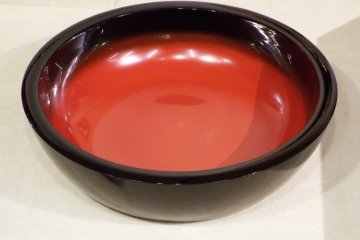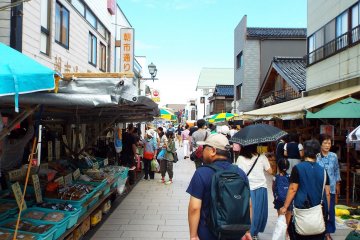Today, people are suffering for many reasons, from climate change to civil conflicts. But it’s often unclear what the best way is to offer support or show generosity.

After the wildfires devastated Maui, Hawaii, some locals urged travelers to stay away. That news got me thinking about my approach to support, and I was uncertain what to do until I visited the Noto Peninsula and heard appreciation directly from the locals. It’s important to remember that everyone thinks differently, and timing is crucial. In most cases, like in Maui, it’s better to stay away immediately after a disaster, unless you are a doctor, firefighter, professional therapist, or a disaster volunteer. I decided to wait and monitor the situation. After reviewing local feedback and reactions following the government's Go Travel aid program, I chose to visit. In the end, visiting the Noto Peninsula and understanding the current situation through the local community was truly worthwhile in supporting their recovery.

Where is the Noto Peninsula, and what happened there?
The Noto Peninsula is located in the northwest of Ishikawa Prefecture, facing the Sea of Japan. On January 1st, 2024, a magnitude 7.6 earthquake struck the region, causing catastrophic damage from the earthquake itself, along with subsequent tsunamis and landslides. Even seven months later, the area is still on a long road to recovery. Eri, a local souvenir shop worker, explained that reconstruction is slow because of the challenging geography. The Noto Peninsula is nestled between the ocean and mountains, isolated from other prefectures. Massive landslides blocked access, forcing rescuers from the Self-Defense Forces to approach by sea. The government and infrastructure firms are gradually restoring public roads, but it's a tough task. Driving from Suzu City to Wajima, some roads remain closed due to landslides, and detours have doubled travel times. Some highways are still under repair, causing frequent delays.

"I could resume the ryokan business after the result of desperate research. However, I will have to pay for everything."
Kinji Kitamura, president of Hana-Goyomi, a ryokan in Nanao City, shared his experience in an interview. While the facility itself remained intact, the essential source of the Wakura hot springs—the original hot water—was damaged. Several pipelines were cracked, preventing the hot springs from reaching the ryokan. Despite considering shutting down, he persisted in finding a solution. To determine whether to close or continue operating, he hired a firm to inspect the pipelines again. An available plumber identified six broken spots by chance. As a result, Mr. Kitamura could resume ryokan operations in May, offering the rich Waga hot springs again.
However, because the repairs were so unexpected, Mr. Kitamura and the plumber didn’t document the necessary before-and-after evidence to apply for subsidies. The plumber, who fixed the pipelines immediately after discovering the damage, forgot to take photos before repairs. Without this evidence, Mr. Kitamura had to cover all the costs himself. The Japanese government offers a subsidy program called Nariwai, covering 75% of business restoration costs, but due to the lack of evidence, Mr. Kitamura has to pay back all of the around 10 million yen to a local bank he borrowed from to fund the repairs. Now, he faces a 10 million yen debt while trying to revive his business.
Despite the challenges, Mr. Kitamura remains hopeful. He believes that once the town fully recovers and welcomes tourists from around the world again, both the community and Hana-Goyomi will thrive.


"I couldn’t believe what was happening in front of me. It’s changing in a flash."
Wajima City, located in the northwest of Noto Peninsula, is known for Wajima-nuri, one of Japan's three major types of lacquerware, and its once-thriving morning markets. The oldest surviving Wajima lacquerware dates back to the Muromachi period (1336-1573), over 400 years ago.

Despite being one of the hardest-hit communities, the people of Wajima are determined to rebuild and show their resilience. Wajima Kobo Nagaya is a lacquer workshop where visitors can design their own Wajima chopsticks with gold leaf. A craftsman from the workshop, who helped with my chopsticks, recalled the earthquake's devastation. He was in his car next to the Nagaya facility when the earthquake hit. He described how the road began to undulate and houses collapsed suddenly.
Wajima still has many areas with debris and collapsed houses. Many ryokans, traditional Japanese inns, are not yet open to tourists, making it difficult to find accommodation unless you plan ahead. However, I encourage you to visit if you can rent a car or find a way to get there. Traveling, buying local souvenirs, and enjoying ethical cuisine are direct ways to support local businesses. Rebuilding factories, restoring infrastructure, and reviving communities are difficult tasks requiring millions and millions of money and years of effort, but showing up in person is one of the most powerful gestures of care, at least that's how I felt.
Go, Wajima, go! Go, Ishikawa Prefecture, go!
















